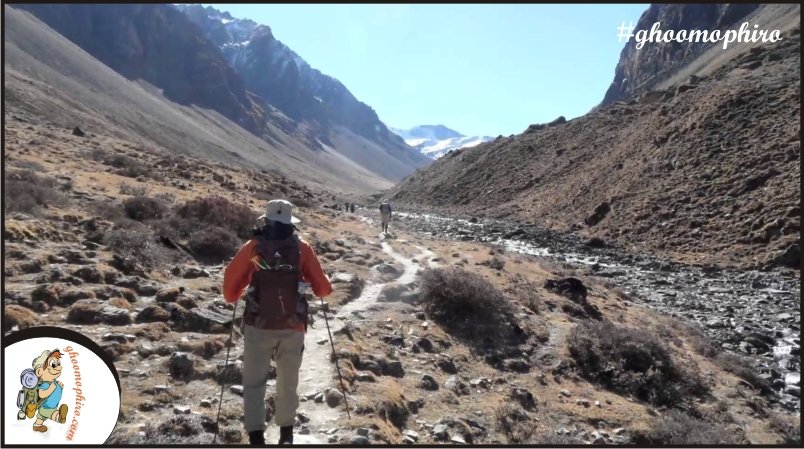Bhutan- the nation that measures its progress and well-being by the Gross National Happiness (GNH) index- is a different world in itself because of nationalismIt is a country where a majority of the geographic area comprises mountains and has peaks with altitudes ranging from 520 ft to more than 23,000 ft above sea level. Located at the southern end of Eastern Himalayas, Bhutan is often called as ‘Mountain Fortress of the Gods’. Therefore, some really good treks can be expected here and all of them are arranged by only local agents. Some of them are as follows:
Druk Path Trek: It is a six-day trek and one of the easy ones. The hike begins from Paro and ends at Druk Path in Thimpu, the capital of Bhutan. On the way, one can enjoy glimpses of Mount Gangkar Puensum (24,836 feet) which is the country’s tallest mountain and even after many attempts by people to climb it, is the highest unscaled peak in the world. The best time to trek on the Druk Path is between March and June or September and November.
The Jhomolhari Trek: This is one of the most popular treks in Bhutan. The difficulty level is above average and one goes through two passes named and Takhung La pass and Bhonte La pass during the trail. The trek gives an amazing view of Mt. Jomolhari (24,000 ft). An annual event called the Jomolhari Mountain Festival, to acknowledge the domestic culture, is celebrated at a different time each year here.
Snowman Trek: Demanding 25 days, the Snowman Trek is probably the toughest trekking routes in the world. It starts from Paro and ends at Lunana stretching between the border region of Bhutan and Tibet. One gets to cross eleven passes including Gangla Karchung La and Loju La, during the journey and there is not much habitation on the way. The best time to trek here is before winters and after monsoons in October.
Bumthang Owl Trek: Trekking on this route is a great idea for those who have a time constraint but want to take away a flavor of the traditional culture with them. It also gives hikers opportunities to visit ancient Buddhist monasteries on the way. Mt. Gangkar Puensum can be seen during the trek. It is also likely to spot Himalayan Black Bears here in the autumn season. The best time to hike here is from April to early June.
Dagala Thousand Lakes Trek: Famous for local trout fishing, Dagala Thousand Lakes Trek is a challenging one which requires at least six days. It gives spectacular sights of some of the highest Himalayan peaks including Mt. Everest and Kanjenjunga. The best time to hike on this route is between April and June or September and October.
Apart from the above-mentioned treks, Bhutan offers a plethora of other ones, for obvious reasons. They give travelers a deep insight into the local culture and the lifestyle of the people. It is a very different experience altogether!
